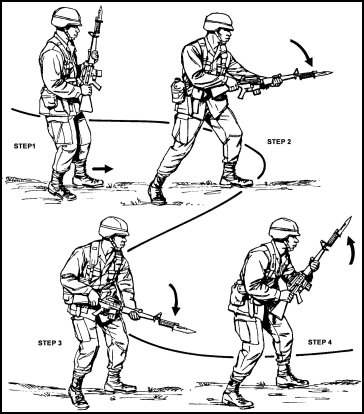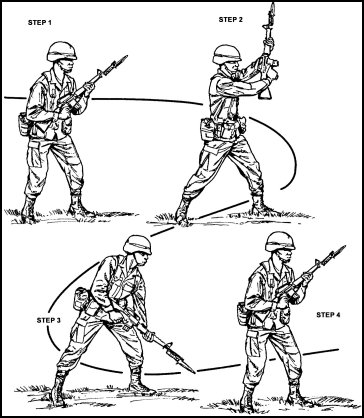I'm very surprised at how few seem to know of the bayonet being used in the slash fighting technique.
The slash was and is a very effective means of offensive attack and or defensive use in keeping the enemy at bay.
A number of armies and forces taught or still teach the slash as a bayonet fighting technique, granted the use of the bayonet in fighting is vastly diminished from the days of old but the requirement of a sharp bayonet for the slash manoeuvre in bayonet fighting existed and is still taught to US marines today among others and who use a sharp bayonet in their bayonet fighting.
A sharp bayonet is what is required for the most successful multiple slash manoeuvres including the throat slash and hand cut. A blunt or dull bayonet blade will not inflict the needed injuries that the sharp bayonet slash can inflict. There is a reason a lot of bayonets were designed with a blade instead of just a sharp point.
A sharp pointed bayonet is only effective in limited use as a thrust manoeuvre only fighting tool while a pointed bayonet with a blade can be used for both the thrust and cut manoeuvres.
When I was in the forces, I was taught these basic bayonet fighting manoeuvres - thrust, butt stroke, slash, and smash as well as how to parry.
I have seen the WW2 era Australian army manual on bayonet fighting that says a sharpened bayonet is required for the effective slash.
The thrust while very effective is only one of and in fact the most primitive of the bayonet fighting techniques. It was mainly pioneered by the French who were big believers in the thrust technique.

Figure 7-15. Slash movement.

Figure 7-24. Modified slash.
http://ejmas.com/jnc/jncart_usmc1942_0503.htm
http://www.thortrains.com/getright/drillbay92.html
http://www.combatical.com/p/2-lethal-and-nonlethal-weapons.html
http://www.globalsecurity.org/military/library/policy/army/fm/3-25-150/ch7.htm
The slash was and is a very effective means of offensive attack and or defensive use in keeping the enemy at bay.
A number of armies and forces taught or still teach the slash as a bayonet fighting technique, granted the use of the bayonet in fighting is vastly diminished from the days of old but the requirement of a sharp bayonet for the slash manoeuvre in bayonet fighting existed and is still taught to US marines today among others and who use a sharp bayonet in their bayonet fighting.
A sharp bayonet is what is required for the most successful multiple slash manoeuvres including the throat slash and hand cut. A blunt or dull bayonet blade will not inflict the needed injuries that the sharp bayonet slash can inflict. There is a reason a lot of bayonets were designed with a blade instead of just a sharp point.
A sharp pointed bayonet is only effective in limited use as a thrust manoeuvre only fighting tool while a pointed bayonet with a blade can be used for both the thrust and cut manoeuvres.
When I was in the forces, I was taught these basic bayonet fighting manoeuvres - thrust, butt stroke, slash, and smash as well as how to parry.
I have seen the WW2 era Australian army manual on bayonet fighting that says a sharpened bayonet is required for the effective slash.
The thrust while very effective is only one of and in fact the most primitive of the bayonet fighting techniques. It was mainly pioneered by the French who were big believers in the thrust technique.

Figure 7-15. Slash movement.

Figure 7-24. Modified slash.
http://ejmas.com/jnc/jncart_usmc1942_0503.htm
http://www.thortrains.com/getright/drillbay92.html
http://www.combatical.com/p/2-lethal-and-nonlethal-weapons.html
http://www.globalsecurity.org/military/library/policy/army/fm/3-25-150/ch7.htm






































































